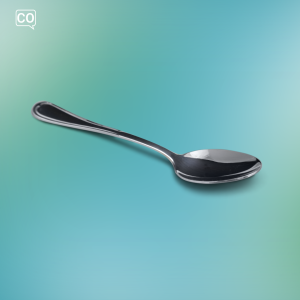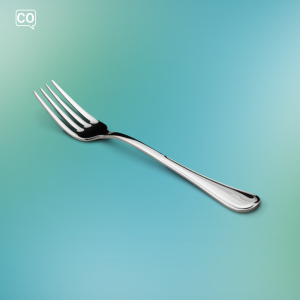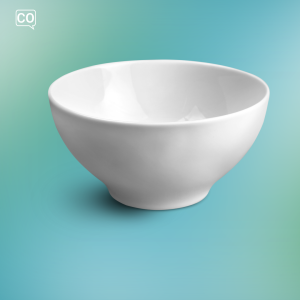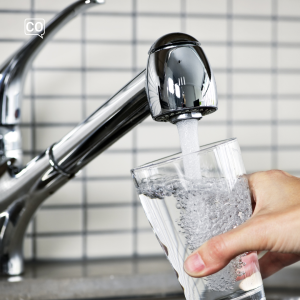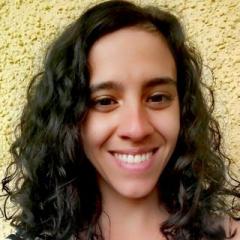Learn French vocabulary for tableware and how to describe the placement of objects using adverbs of place. This lesson covers essential items like plates, forks, and glasses, and includes key verbs such as washing and wiping dishes. Practical dialogues and grammar exercises focus on real-life situations for setting and checking the table, suitable for A1 level learners.
Listening & reading materials
Practice vocabulary in context with real materials.
Vocabulary (15) Share Copied!
Exercises Share Copied!
These exercises can be done together during conversation lessons or as homework.
Exercise 1: Reorder sentences
Instruction: Make correct sentences and translate.
Exercise 2: Match a word
Instruction: Match the translations
Exercise 3: Cluster the words
Instruction: Sort the words into two categories based on whether they designate objects for setting the table or actions related to dishwashing.
Objets pour dresser la table
Actions liées à la vaisselle
Exercise 4: Translate and use in a sentence
Instruction: Pick a word, translated and use the word in a sentence or dialogue.
1
La tasse
The cup
2
La fourchette
The fork
3
Le couteau
The knife
4
Les couverts
Cutlery
5
L'assiette
The plate
Exercice 5: Conversation exercise
Instruction:
- Ask to pass any item you need. (Ask to pass any item you need.)
- Name all tableware and the usage. (Name all tableware and the usage.)
Teaching guidelines +/- 10 minutes
Example phrases:
|
Le bol avec du sucre est sur la table. The bowl with sugar is on the table. |
|
La cuillère est dans le bol. The spoon is in the bowl. |
|
Peux-tu mettre la nappe sur la table ? Can you put the tablecloth on the table? |
|
Le verre est rempli de jus d'orange. The glass is filled with orange juice. |
|
L'assiette est remplie de croissants. The plate is filled with croissants. |
|
Peux-tu me passer un verre d'eau f Can you pass me a glass of water? |
|
Voulez-vous une tasse de café ou une tasse de thé ? Do you want a cup of coffee or a cup of tea? |
|
La fourchette, le couteau et la cuillère sont à côté de l'assiette. The fork, knife, and spoon are next to the plate. |
| ... |
Exercise 6: Dialogue Cards
Instruction: Select a situation and practice the conversation with your teacher or fellow students.
Exercise 7: Multiple Choice
Instruction: Choose the correct solution
1. Je ___ les assiettes avant de mettre la table.
(I ___ the plates before setting the table.)2. Tu ___ les légumes pour la salade.
(You ___ the vegetables for the salad.)3. Il est en train de ___ les verres à côté de l'évier.
(He is ___ the glasses next to the sink.)4. Nous ___ les couverts devant la fenêtre.
(We ___ the cutlery in front of the window.)Exercise 8: Setting the table before the guests arrive
Instruction:
Verb Tables
Inviter - Invite
Présent
- j'invite
- tu invites
- il/elle invite
- nous invitons
- vous invitez
- ils/elles invitent
Laver - Wash
Présent
- je lave
- tu laves
- il/elle lave
- nous lavons
- vous lavez
- ils/elles lavent
Couper - Cut
Présent
- je coupe
- tu coupes
- il/elle coupe
- nous coupons
- vous coupez
- ils/elles coupent
Mettre - Set
Présent
- je mets
- tu mets
- il/elle met
- nous mettons
- vous mettez
- ils/elles mettent
Essuyer - Wipe
Présent
- j'essuie
- tu essuies
- il/elle essuie
- nous essuyons
- vous essuyez
- ils/elles essuient
Exercise 9: Les adverbes de lieu
Instruction: Fill in the correct word.
Grammar: Adverbs of place
Show translation Show answersà côté, en dessous de, en face de, devant, derrière, chez
Grammar Share Copied!
It's not the most exciting thing, we admit, but it’s absolutely essential (and we promise it'll pay off)!
Verb conjugation tables for this lesson Share Copied!
Laver to wash Share Copied!
present
| French | English |
|---|---|
| (je/j') je lave | I wash |
| tu laves | you wash |
| il/elle/on lave | he/she/one washes |
| nous lavons | We wash |
| vous lavez | You wash |
| ils/elles lavent | They wash |
Couper to cut Share Copied!
present
| French | English |
|---|---|
| (je/j') je coupe | I cut |
| tu coupes | you cut |
| il/elle/on coupe | He/she/one cuts |
| nous coupons | We cut |
| vous coupez | You cut |
| ils/elles coupent | They cut |
Don't see progress when learning on your own? Study this material with a certified teacher!
Do you want to practice French today? That is possible! Just contact one of our teachers today.
Introduction to Tableware and Location Adverbs
This lesson introduces you to the essential vocabulary related to tableware in French and teaches you how to describe the placement of objects using adverbs of place. You will learn common words such as l'assiette (plate), la fourchette (fork), le couteau (knife), la serviette (napkin), and le verre (glass). The lesson also covers action verbs related to setting and cleaning the table, like faire la vaisselle (to do the dishes) and essuyer (to wipe).
Key Concepts and Vocabulary
- Objects for setting the table: plates, forks, knives, spoons, napkins, and glasses.
- Actions related to dishes: washing and wiping the dishes.
- Adverbs of place: words like devant (in front of), à côté (next to), derrière (behind), and sur (on).
Using Placement Sentences
Practice sentences such as "Je mets les assiettes devant chaque chaise" (I put the plates in front of each chair) and "La fourchette est à côté de l’assiette" (The fork is next to the plate) show how to describe where items are placed on the table. Learning these phrases will help you communicate settings for meals effectively.
Dialogues and Interaction
The course includes dialogues where you ask and answer questions about table arrangements, making it practical for real-life situations such as preparing a meal for guests or organizing kitchenware.
Grammar Focus
The lesson also helps you practice simple present tense conjugations of common verbs used when preparing the table, such as laver (to wash), couper (to cut), and essuyer (to wipe).
Instruction Language and French Differences
In English, instructions about placing objects tend to be straightforward: "Put the plates on the table." In French, the prepositions and adverbs of place are crucial to convey exact positions, like devant, derrière or à côté de. For example, "La serviette est en face de la fourchette" means "The napkin is opposite the fork." It’s important to remember that French spatial expressions often use the definite article with objects (la fourchette vs. just "fork" in English). Useful phrases include "Où est...?" (Where is...?) and "Il faut mettre..." (You must put...). These expressions help in both asking and giving precise instructions.





